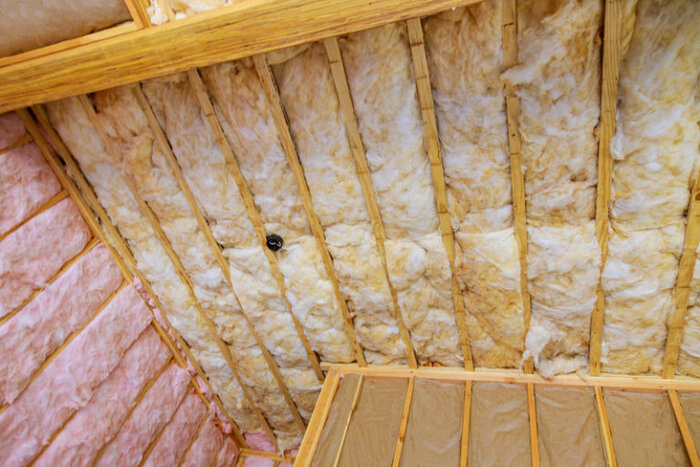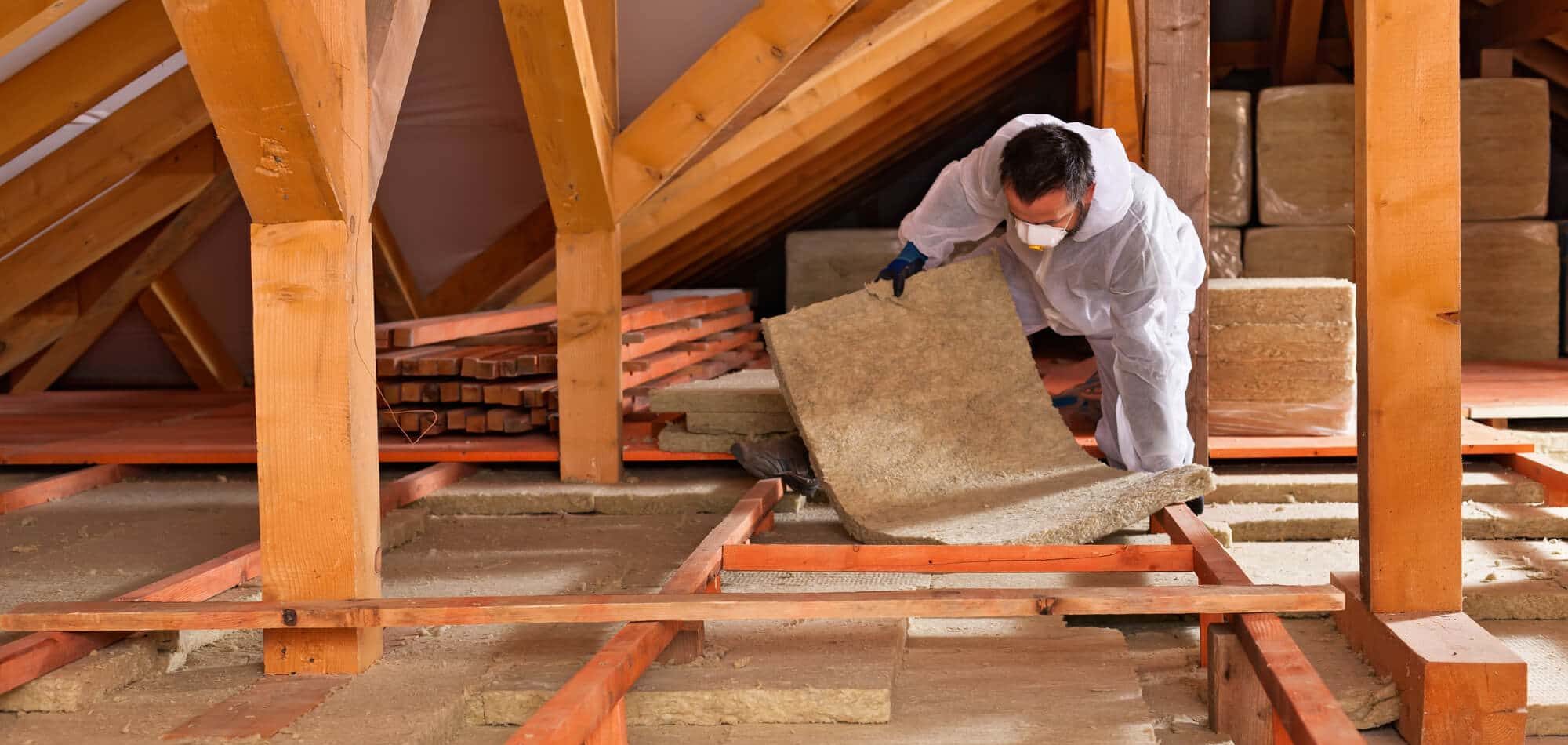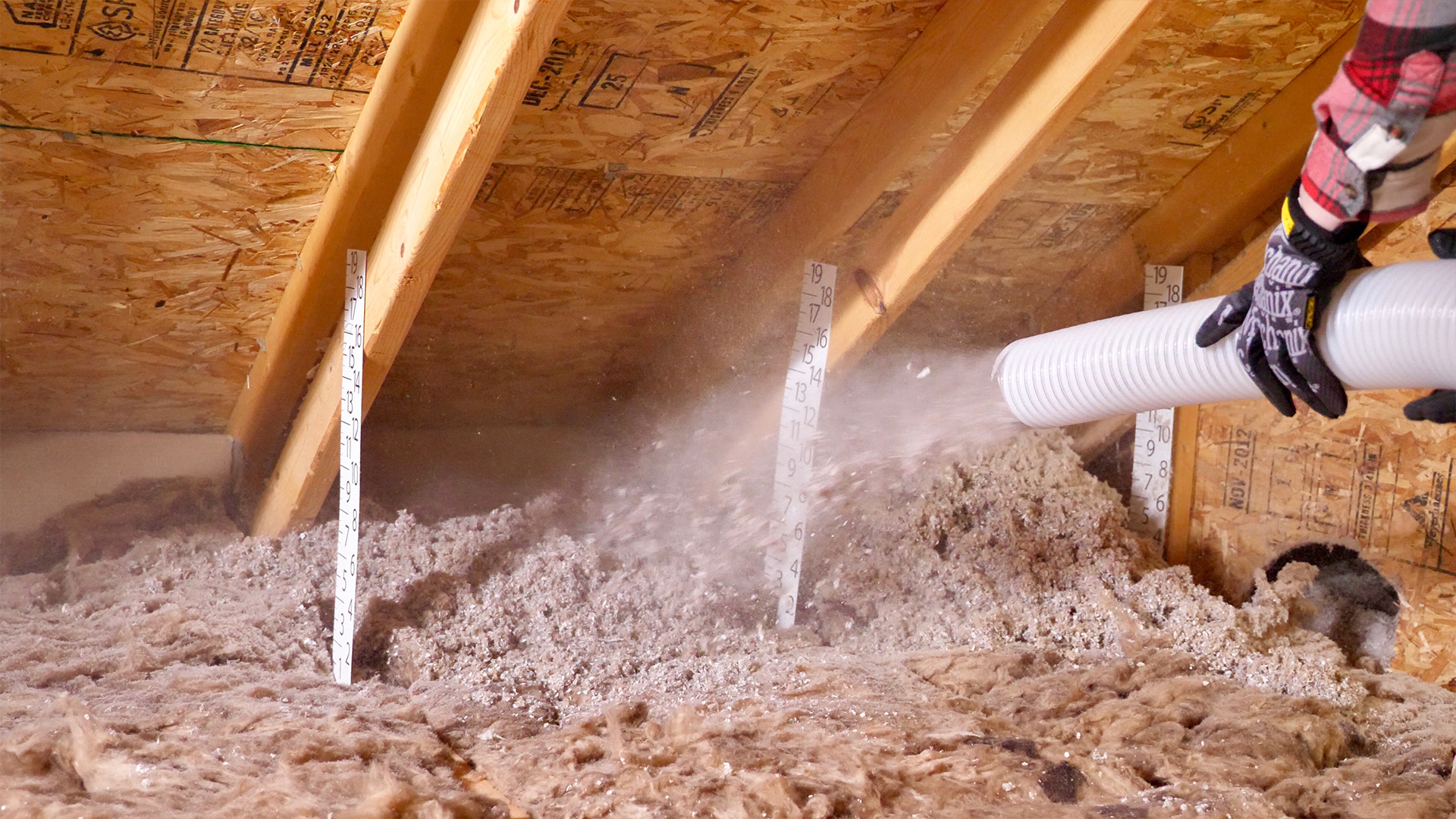Attic Insulation DFW: The Trick to Lower Energy Costs and Improved Home Convenience
Attic Insulation DFW: The Trick to Lower Energy Costs and Improved Home Convenience
Blog Article
Discover the Different Types of Attic Insulation and Their One-of-a-kind Benefits for Your Home's Energy Efficiency

Fiberglass Insulation
Fiberglass insulation is one of one of the most generally used products for attic insulation due to its excellent thermal performance and cost-effectiveness. Made up of small glass fibers, this product successfully catches air, producing a protecting barrier that helps preserve consistent indoor temperatures. Its high R-value per inch makes it particularly effective at standing up to warm transfer, which is essential for power preservation in homes.
Setup of fiberglass insulation is fairly uncomplicated, frequently readily available in batts or loose-fill forms, suiting various attic arrangements. Furthermore, it is non-combustible and resistant to wetness, minimizing the threat of mold and mildew development. This toughness adds to its durability, making fiberglass a feasible long-term investment for home owners.
Moreover, fiberglass insulation is commonly produced from recycled materials, which improves its eco-friendliness. The material can likewise add to soundproofing, lessening sound transfer between areas. While it is necessary to use safety gear throughout setup to stay clear of irritation from the fibers, the total benefits of fiberglass insulation, including power financial savings and environmental factors to consider, make it a popular choice for boosting attic room efficiency and promoting a comfy living setting.
Spray Foam Insulation
Spray foam insulation is a highly reliable option for attic room insulation, known for its premium air securing and thermal efficiency. This ingenious insulation material is composed of a mix of isocyanate and polyol resin, which, when combined, expands quickly to fill up spaces and dental caries in the attic room. Its ability to follow numerous surfaces makes sure a constant barrier versus air leakages, considerably decreasing heat loss during colder months and warm gain during warmer periods.
One of the key advantages of spray foam insulation is its high R-value per inch, which suggests it offers superb thermal resistance in a relatively slim application. This is particularly helpful in attics where room is frequently limited. Additionally, spray foam can aid minimize dampness buildup, decreasing the danger of mold and mildew and mold growth, which can be detrimental to both the framework and indoor air high quality.
While the first cost of spray foam insulation might be greater than traditional options, its long-term energy savings, coupled with raised comfort and boosted home worth, make it a worthwhile financial investment for house owners looking for enhanced energy efficiency. Attic Insulation DFW. Overall, spray foam insulation attracts attention as an effective remedy for enhancing attic insulation
Cellulose Insulation

Cellulose insulation is a popular selection for attic insulation, mainly composed of recycled paper products treated with fire retardants. This eco-friendly alternative is known for its excellent thermal performance, successfully lowering warmth transfer in both summer season and winter season. The dense composition of cellulose enables it to fill up gaps and spaces in attic areas, providing a seamless barrier versus air leaks.
One of the significant benefits of cellulose insulation is its ability to stand up to mold and parasites, owing to the fire resistant therapies used throughout manufacturing. Furthermore, it flaunts a high R-value per inch, which converts into superior energy effectiveness. Property owners can anticipate lower home heating and air conditioning costs as a result of enhanced insulation.
Setup is generally accomplished with blowing loosened cellulose right into the desired location, permitting a quick and efficient procedure. This method also lessens disruption to the existing framework. Cellulose insulation has a fairly low environmental influence, as its manufacturing process makes use of recycled materials, adding to lasting structure practices.
Rock Wool Insulation
Among the different choices for attic room insulation, rock woollen, also called mineral wool, sticks out as a result of its outstanding thermal and acoustic efficiency. Made from all-natural or recycled products, rock wool is created by melting rock and rotating it into fibers, leading to a product that provides excellent insulation homes.
Among the significant benefits of rock woollen insulation is its high R-value, which shows its performance in resisting heat flow. This characteristic not only improves energy effectiveness but likewise adds to maintaining a comfy interior temperature level check this site out year-round. In addition, rock wool is naturally fireproof, making it a more secure choice for homes as it can hold up against high temperatures without melting or releasing toxic fumes.
In addition, rock wool insulation succeeds in soundproofing capabilities, successfully decreasing sound transmission in between spaces and from outside sources. In general, rock woollen insulation gives a comprehensive solution for enhancing power effectiveness, security, and convenience in property settings.
Radiant Obstacle Insulation
Radiant barrier insulation acts as an efficient option for lessening warm transfer in attics, specifically in warmer environments. This kind of insulation jobs by mirroring convected heat away from living spaces, consequently reducing the amount of warmth that enters a home during heat - Attic Insulation DFW. Commonly made up of a highly reflective product, such as light weight aluminum foil, glowing barriers are set up in attics, encountering the roofing system, where they can intercept incoming warm from the sunlight
The key benefit of radiant obstacle insulation is its ability to reduced air conditioning expenses. By showing warmth rather than absorbing it, radiant obstacles can assist preserve a much more steady indoor temperature, minimizing the work on cooling systems. This efficiency converts into reduced energy bills and boosted convenience for homeowners.
In addition to power savings, radiant obstacles can additionally add to enhanced indoor air quality. By lowering heat build-up, they assist minimize moisture levels, which can stop mold and mildew development and enhance overall air flow. When mounted appropriately, glowing barrier insulation can be a vital enhancement to any type of energy-efficient home, making it a Your Domain Name worthwhile consideration for house owners looking to improve their attic insulation technique.
Conclusion
In final thought, comprehending the numerous kinds of attic room insulation-- fiberglass, spray foam, cellulose, rock wool, and glowing barriers-- allows home owners to make educated choices pertaining to power performance. By choosing the appropriate insulation material, substantial reductions in power costs can be attained, along with enhancements in indoor convenience.

In conclusion, recognizing the different types of attic room insulation-- fiberglass, spray foam, cellulose, rock woollen, and radiant obstacles-- allows house owners to make educated decisions concerning energy performance.
Report this page